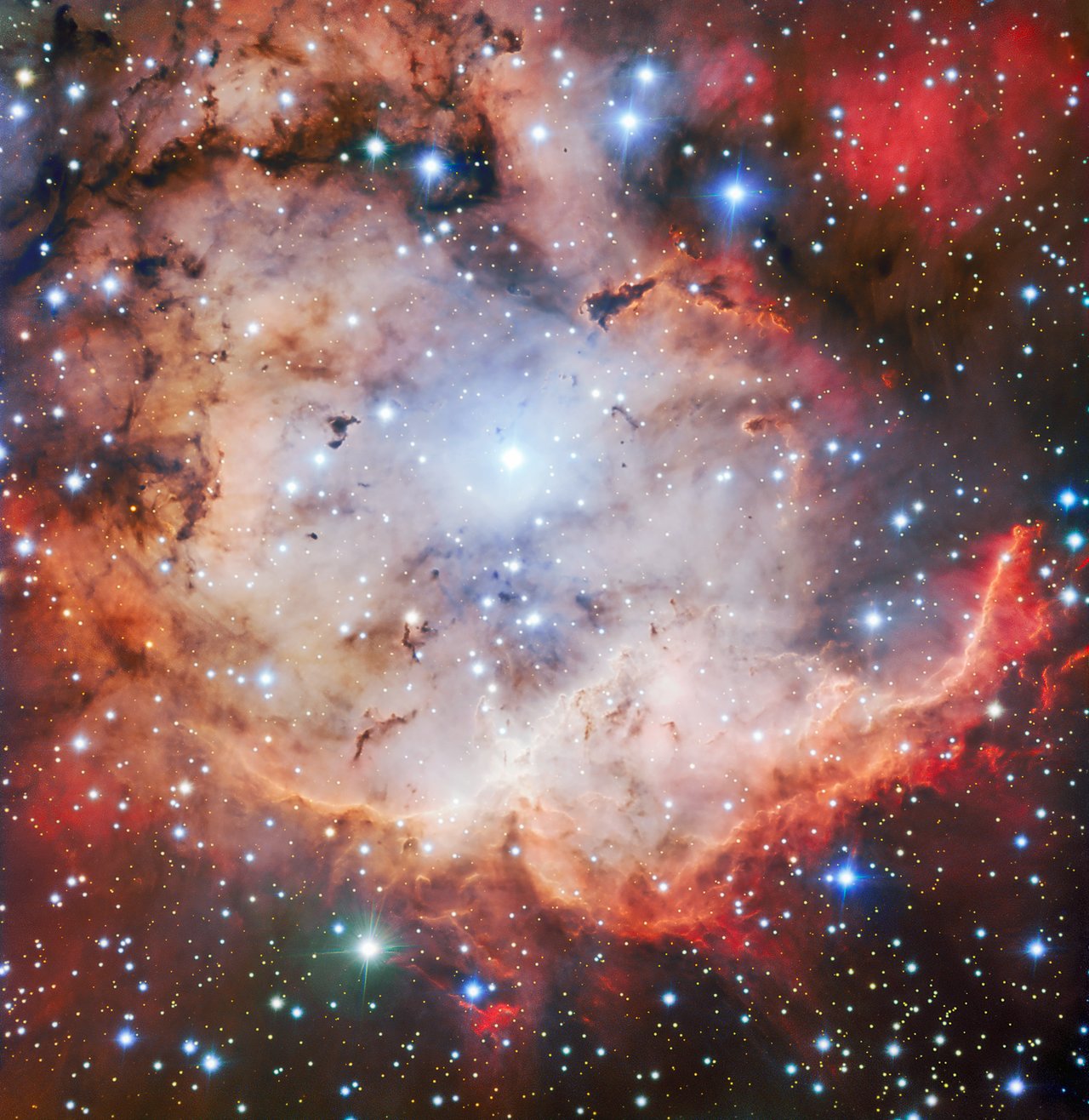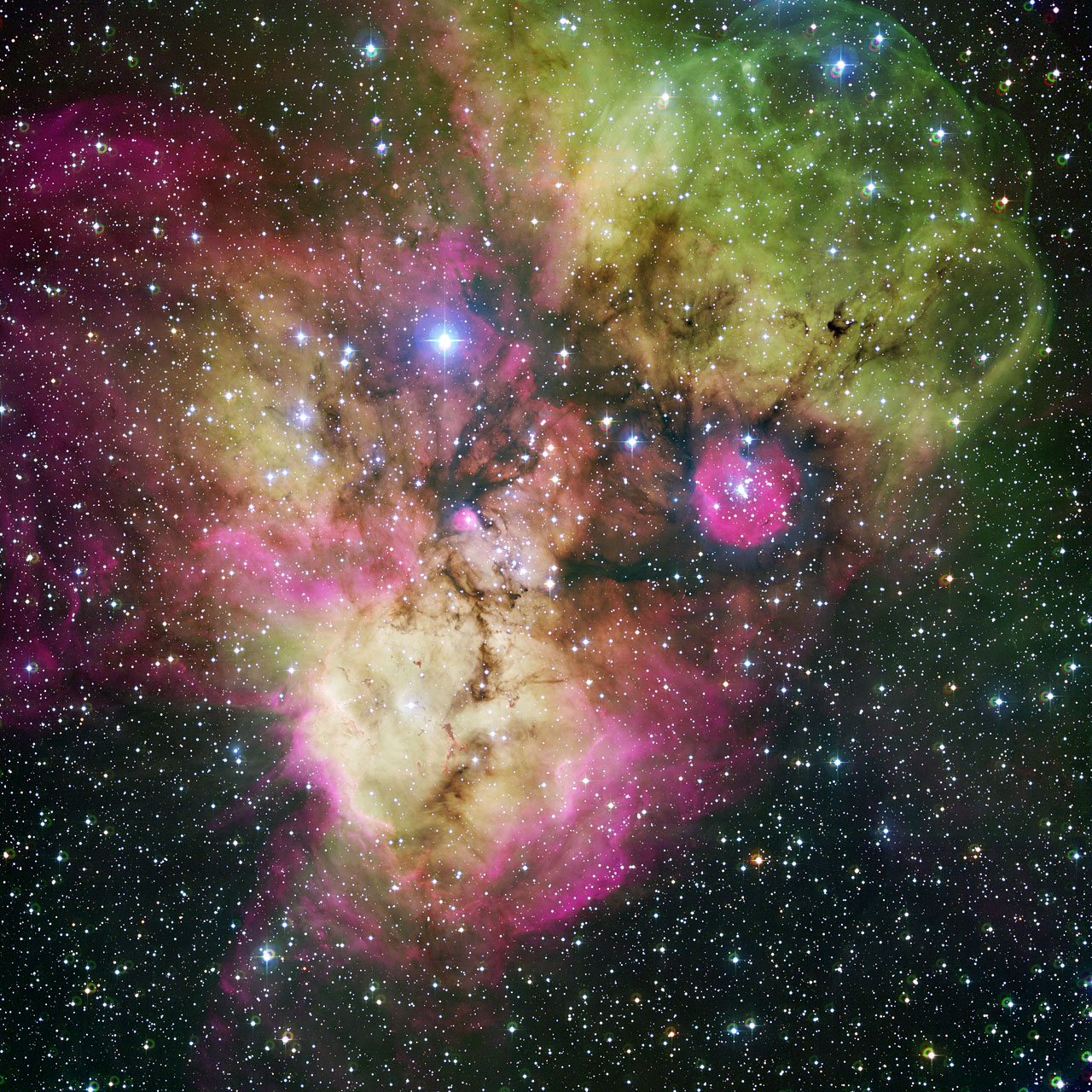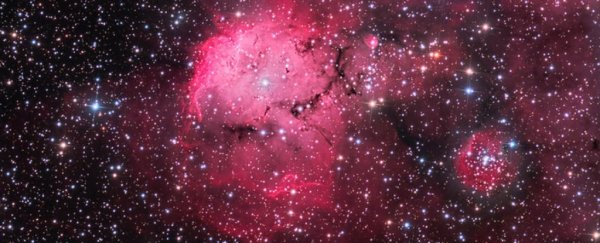There's something out there, watching us from the night sky. We can't see it, but it can see us.
European Southern Observatory (EOS) has recently released a new and eerie view of the active star-forming region NGC 2467, ominously known as the Skull and Crossbones Nebula.
The image is both beautiful and sinister. Bound by the whims of gravity, the swirling cloud of dust, gas and bright young stars resembles a hollow face, a grinning skull with burning eyes and a gaping mouth. The pirate of the southern skies.

It's enough to make your spine tingle. Captured by the ESO's Very Large Telescope (VLT), during a rare moment of idle time, the image is a celebration of celestial beauty more than a scientific pursuit.
"This luminous image might not tell astronomers anything new, but it provides us all with a glimpse into the churning southern skies, bright with wonders invisible to the human eye," the ESO website reads.
It's also a fun way to get creeped out this Halloween.
If you're struggling to find the skull in the image above, astronomers at the ESO released a different and potentially even more terrifying view in 2005.
Below, you can clearly see the dark eye sockets, a region concentrated with so much dust that light from the stars inside of it can't break through.

Contrary to the name, the Skull and Crossbones is not a single nebula but a collection of stellar clusters moving at different velocities.
And, although it may seem like the perfect place, this celestial skeleton does not lurk in some cosmic graveyard. It actually lives (as much as a skull can 'live') in a nursery for baby stars, just a few million-years-old at the most.
In fact, this nursery is extremely active, with new stars born continuously from large clouds of dust and gas.
"It is only a fortuitous alignment along the line of sight from the Earth that makes the stars and gas form a humanoid face," explains the ESO in a statement that went along with the image.
This creepy stroke of luck is located in the southern constellation of Puppis, which is 13,000 light-years away from Earth near the Perseus Arm of the Milky Way.
The constellation Puppis originates from the French word for the stern of a boat and is one of three nautically-themed constellations that "sail the southern skies".
Together, all three - the sail, the stern and the keel - used to be called Argo Navis, named after the Greek myth, Jason and the Argonauts.
Since Jason was famous for stealing gold fleece, it's seems only fitting that his cosmic equivalent sail a ship with the flag of a true pirate.
The new view of the Skull and Crossbones Nebula was created as part of the ESO Cosmic Gems programme for the purpose of education, public outreach and general spookiness.
